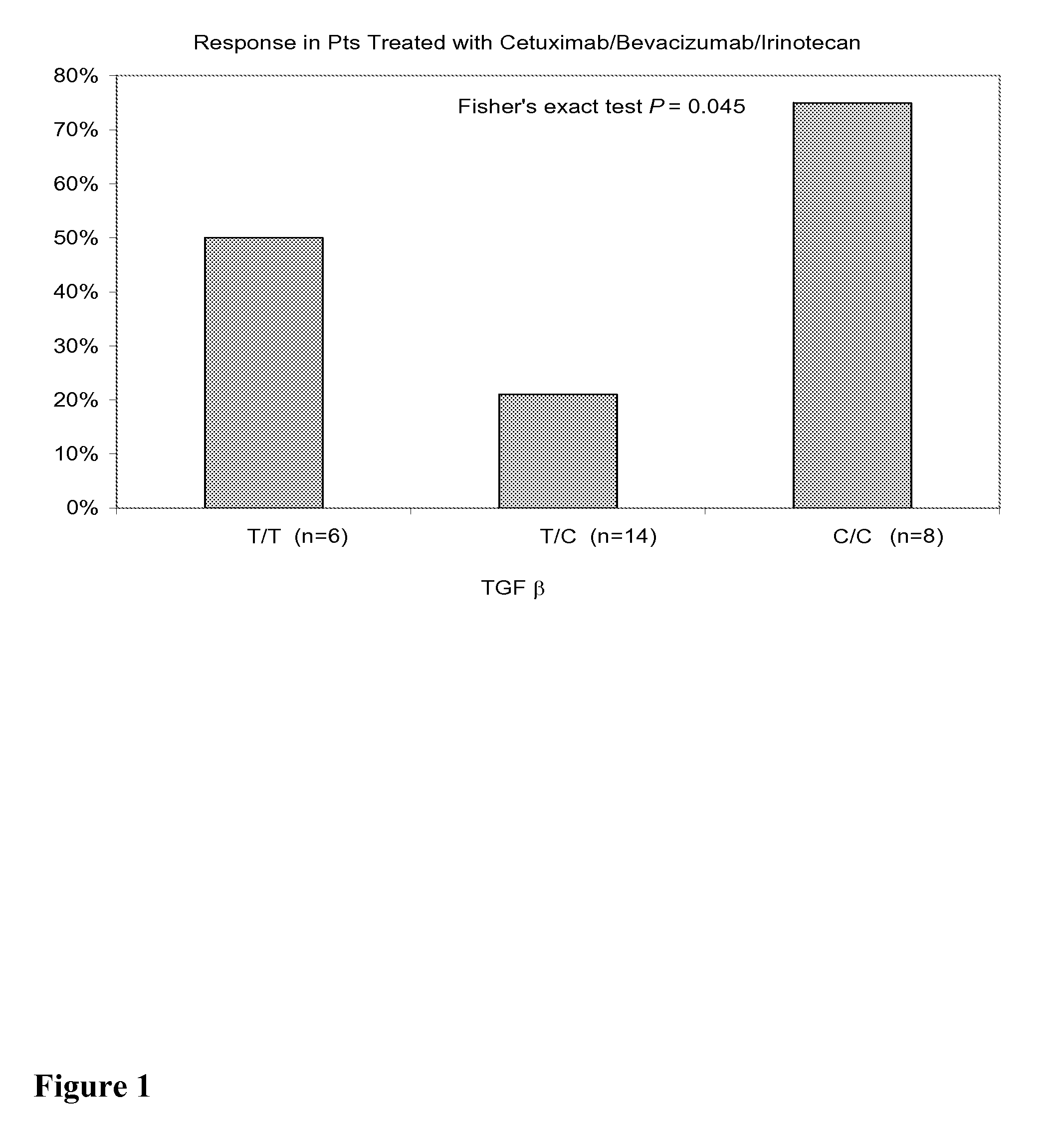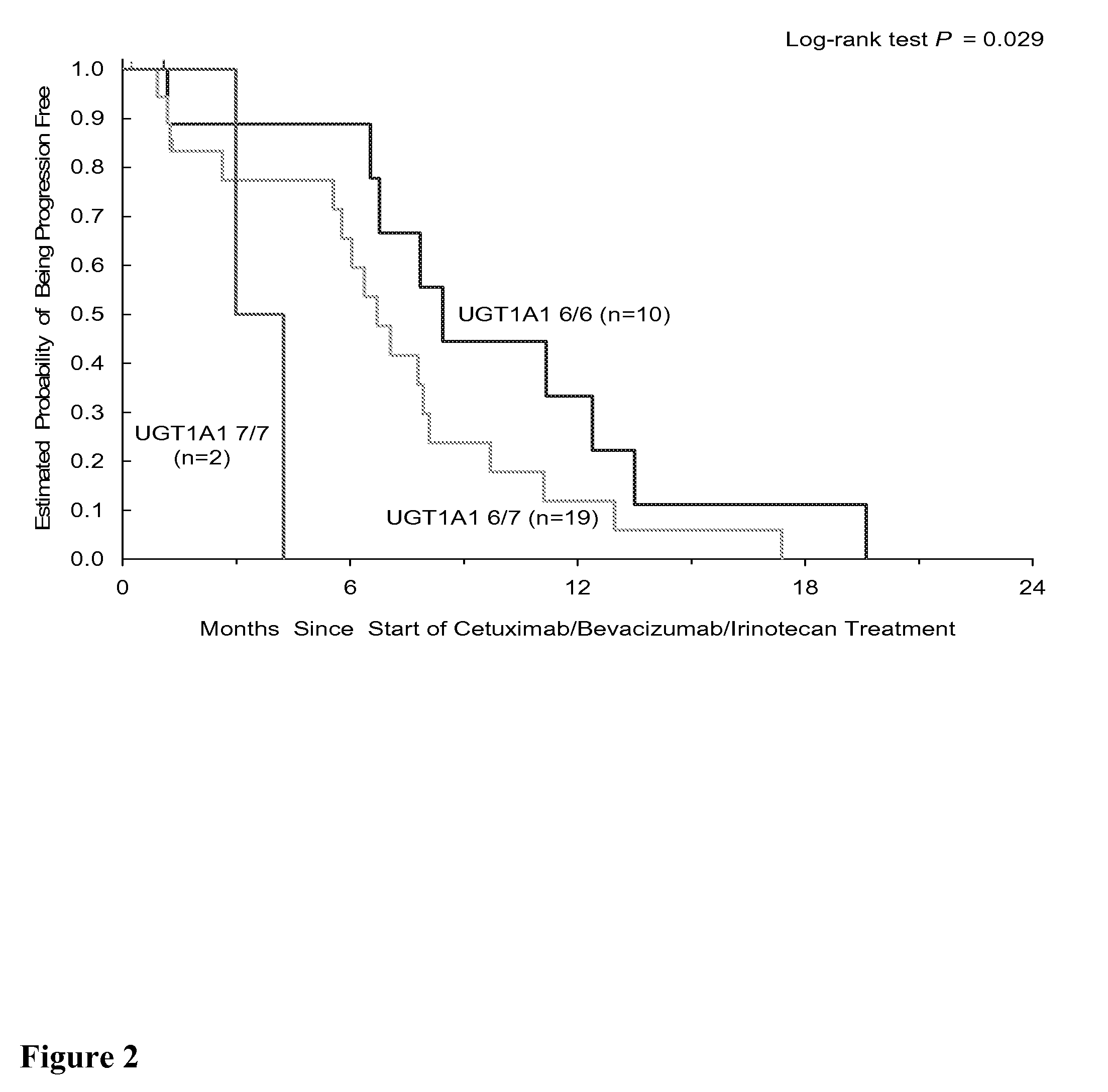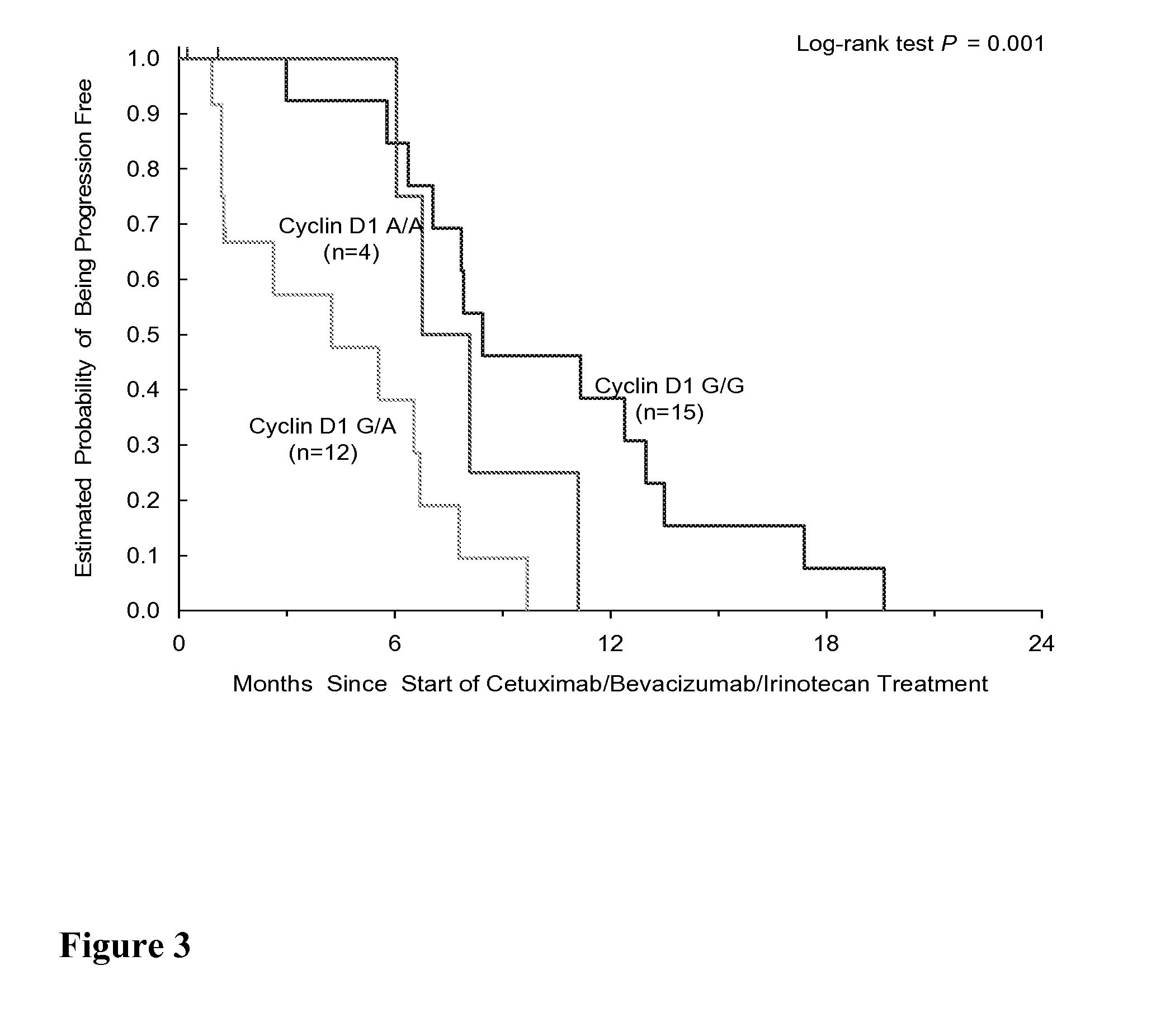Genetic Markers for Predicting Responsiveness to Combination Therapy
a combination therapy and gene marker technology, applied in the field of genetic polymorphism, can solve problems such as limited cancer chemotherapy
- Summary
- Abstract
- Description
- Claims
- Application Information
AI Technical Summary
Benefits of technology
Problems solved by technology
Method used
Image
Examples
experimental examples
[0259]For the purpose of illustration only, peripheral blood sample can be collected from each patient, and genomic DNA can be extracted from white blood cells using the QiaAmp kit (Qiagen, Valencia, Calif.).
example 1
[0260]Background Phase II CBI VS CB trial has shown that Bevacizumab added the efficacy of cetuximab and cetuximab / irinotecan in irinotecan-refractory Bevacizumab-naïve CRC patients. Germline polymorphisms involved in angiogenesis (VEGF, IL-8, TGF-β), the EGFR pathway (EGFR, COX-2, E-cadherin), DNA repair (ERCC1, XRCC1, XPD) and drug metabolism pathway (GSTP1, UGT1A1) were tested to evaluate their association with clinical outcome.
[0261]Methods Blood samples for 65 out of 81 patients (abbreviated as “pts”) enrolled in the BOND 2 study were tested for polymorphisms, and the results from these 65 pts are reported in this analysis (44 men, 21 women, median age 58 years (range 24-86)). Pts received either with Cetuximab / BZ / Irinotecan “CBI” (n=31) (Arm A) or with Cetuximab and BZ “CB” (n=34) (Arm B). In Arm A, 12 pts (43%) had PR, the median time to progression was 7.1 months, and the median survival was 18.0 months. In Arm B, 9 pts (27%) had PR, the median time to progression was 4.6 mo...
example 2
[0263]Background In an expansion of Experimental Example 1, a phase II CBI VS CB trial has shown that bevacizumab added the efficacy of cetuximab and cetuximab / irinotecan in irinotecan-refractory bevacizumab-naïve CRC patients. Germline polymorphisms involved in angiogenesis (VEGF, IL-8, TGF-β), EGFR pathway (EGFR, COX-2, CyclinD1, E-cadherin, FCGRIIA, FCGRIIIA), DNA repair (ERCC1, XRCC1, XPD) and drug metabolism pathway (GSTP1, UGT1A1) were tested to evaluate their association with clinical outcome. Here, gene polymorphisms data was expanded to involve EGFR pathway (EGF, FCGR2B, Survivin, ADAMS10 / 17), Angiogenesis pathway (Neuropilin-1, HIF-1, Tissue factor) and irinotecan metabolism pathway (ABCB1, OATPC).
[0264]Methods Genomic DNA was extracted from blood samples. 65 out of 81 patients enrolled in the BOND 2 trial were available for molecular correlates study. these 65 patients include 44 men, 21 women, median age 58 years (range 24-86). Patients received either with CBI (n=31) (A...
PUM
| Property | Measurement | Unit |
|---|---|---|
| concentrations | aaaaa | aaaaa |
| weight | aaaaa | aaaaa |
| weight | aaaaa | aaaaa |
Abstract
Description
Claims
Application Information
 Login to View More
Login to View More - R&D
- Intellectual Property
- Life Sciences
- Materials
- Tech Scout
- Unparalleled Data Quality
- Higher Quality Content
- 60% Fewer Hallucinations
Browse by: Latest US Patents, China's latest patents, Technical Efficacy Thesaurus, Application Domain, Technology Topic, Popular Technical Reports.
© 2025 PatSnap. All rights reserved.Legal|Privacy policy|Modern Slavery Act Transparency Statement|Sitemap|About US| Contact US: help@patsnap.com



